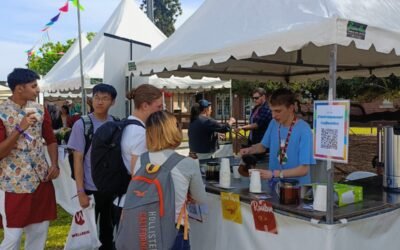By Aldric Chuah:
Contemporary Australian society is one of the most culturally diverse nations on the planet. However it did not have the most humble of beginnings. In 1901 the Australian government enacted the Immigration Restriction Act. This involved a dictation test which was given to any prospective migrant. The only problem was the test didn’t necessarily have to be given in English. For instance, a prospective Chinese migrant might be asked to complete the test in Italian. It was completely subjective and was designed that way to ensure that Australian society remained ‘white’ and specifically British.
In 1945 Arthur Calwell was appointed as Australia’s first Immigration Minister by Prime Minister Ben Chifley. A new precedent would be established when Chifley bypasses the Labor Caucus and gives Caldwell the permission to source immigrants from nations other than Britain. Caldwell would source immigrants from war-torn Europe and from places such as Greece and Poland. As a result, Australia took in more Holocaust survivors than any other nation apart from Israel. Newly arrived immigrants were not accustomed to the different life. They were discriminated against and verbally abused but were happy to be free from the ravages of war-torn Europe. Robert Menzies becomes Prime Minister in 1949 and rather unexpectedly he continued with this radical program of non British immigration. However this would not mean the end of White Australia, as it would continue under his successors.
The White Australia policy had bipartisan support and despite launching the ambitious immigration program of post-war Australia, Arthur Calwell (who is now Opposition Leader) remains an ardent supporter of White Australia. On Australia Day 1966 Prime Minister Robert Menzies resigns. His successor Harold Holt heralds generational change and there is hope that reform will also result. Indeed the 1967 Constitutional Referendum seems to signal an intent to right the wrongs of the past by including Indigenous Australians in the Census. The Migration Act of 1966 paves the way for non-Asian immigration to Australia. Non-Asian immigration does increase from 746 in 1966 to 2696 in 1971. Unfortunately Holt dies whilst swimming in Portsea in 1967. Coincidentally, after leading the Labor Party to the third successive election defeat, Arthur Calwell reigns as ALP leader.
He is succeeded by his erudite deputy Gough Whitlam. Whitlam has a commanding presence at 6 foot 4 inches (1.94m) and is a suave performer on the television. His entire ministry heralds in a sweeping agenda which would transform Australian society forever. Whitlam’s Minister for Immigration Al Grassby famously declared on national television about White Australia “give me a shovel and I shall bury it”. Indeed the Racial Discrimination Act 1975 enshrines in legislation that it is unlawful to discriminate on the basis of race as well as protect individuals from acts of racial intimidation. It is used to this day. However, contrary to popular belief, it was not the Whitlam Labor government who would herald in non-Asian immigration to Australia. April 30th 1975 signals the Fall of Saigon and the end of the Vietnam War. This resulted in thousands of Vietnamese refugees seeking to flee the communist forces. The first boat of refugees arrived in Darwin on Anzac Day 1976. Soon a small exodus turns into hundreds of boats.
Confronted with a humanitarian crisis, newly elected Prime Minister Malcolm Fraser ultimately makes the decision to accept 14,000 refugees in July 1979. Many more would come to call Australia their new home. Australia today benefits from a multicultural society, from the injection of cultural traditions to the sharing of food and music. In less than a century the fabric of Australian society has completely transformed and we are better for it.
IMAGE: Naomi, purplewoods.wordpress.com



